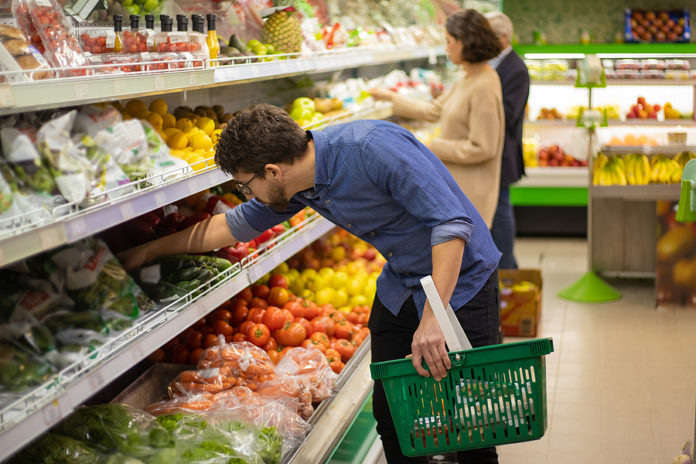
Grocery shopping today is all about price — 85% of consumers favor food options with a lower price tag, up 5% from last year, according to a new report from Deloitte. But a strong interest in health and wellness could present an opportunity for sales growth in fresh food.
To determine how consumer attitudes toward fresh foods have changed, Deloitte surveyed over 2,000 U.S. adults with influence over their household’s fresh food purchases.
Price above all else
To no surprise, price has taken center stage as consumers plan their grocery trips:
- Rising prices are the primary cause of shopping stress (53%), far above other factors such as changes in financial situations (13%), COVID-19 concerns (12%), and changes in store operations (10%).
- Consumers are coping by buying fewer costly food items (46%), trading down from name brands to private labels (38%), and using coupons or buying discounted items (37%).
- Many consumers are cutting back even more — 30% stopped purchasing certain high-end food items and other non-essential extras, and 15% have participated in food assistance programs like SNAP and WIC.
A year ago, Deloitte named three Ps — price, preference, and perishability — leading to a growing consumer preference for frozen foods. Now, price is crowding out the other two influencers.
Non-GMO, sustainability, and locally-grown are less likely (down at least 12%) to drive purchases than they were before the pandemic, likely because these purchase drivers come with a premium. And although almost 80% of consumers take food waste into account when shopping, 40% are reducing their food waste in response to rising prices. Consumers with lower incomes are even more likely to focus on food waste reduction, indicating that it’s more about not wasting their food budget on uneaten food.
Cost pushes frozen food to the back of the shelf
While consumers were stocking up on frozen foods at the start of the pandemic, high prices have changed that. Price perceptions for frozen equivalents have risen at nearly double the rate of fresh food (12% vs. 7%, respectively). And in terms of units sold, frozen sales fell more than fresh.
To save money, 18% of shoppers report leaning away from frozen and other shelf-stable foods in favor of fresh, and this percentage bumps up to 25% for lower-income and rural groups. But this doesn’t mean they want to pay more for fresh food — compared to last year, consumers are 9% less willing to pay a premium for fresh food (down to 61%).
 Health and wellness benefits key for fresh success
Health and wellness benefits key for fresh success
But how would consumers choose if prices were equal between fresh and frozen? Survey responses indicate that health and wellness could be the deciding factor.
Even with food prices top of mind, half of consumers would be willing to pay more for food that acts as medicine. And at least 75% of consumers would agree that eating the right foods can:
- Promote health and prevent certain health challenges
- Be therapeutic and alleviate certain existing health conditions
- Be the best medicine
Eight in ten consumers consider fresh food healthier than packaged or processed food that’s marketed as healthy. But packaged foods have the advantage of health-related formulation, supplementation, and label claims. Meanwhile, finding health information about fresh foods is challenge for consumers:
- More than 60% of consumers say there’s conflicting information about the healthfulness of certain foods.
- Four in ten aren’t sure which foods can act as medicine.
- Information on food origins, safety, and nutritional benefits is critical for more than half of consumers to confidently use food as medicine.
Boosting fresh sales with education
The focus on health and wellness may be an opportunity to increase fresh sales, but it’s going to take some trust building and knowledge sharing from food brands and retailers, while being mindful that many consumers aren’t looking far beyond price right now.
Deloitte’s report shares several recommendations for fresh food producers hoping to help consumers use food as medicine, including:
- Back health claims with validated research and scientific literature.
- Partner with organizations that can provide resources and help fill in information gaps.
- Help combat fresh food insecurity in the community through supportive programs.
- Invest in tracking and traceability and work closely with food retailers to provide consumers with detailed health and safety information.
In short, price is casting a dark shadow on consumer grocery lists, but the desire to make healthy choices is definitely there. Fresh food producers that can work alongside retailers to clearly communicate the healthfulness of their products will have a competitive advantage, as long as they can find ways to keep costs down.
For more insights into the impact of inflation, the connection between food and health, and how the food industry can adapt to changing consumer behaviors, see the full report.







